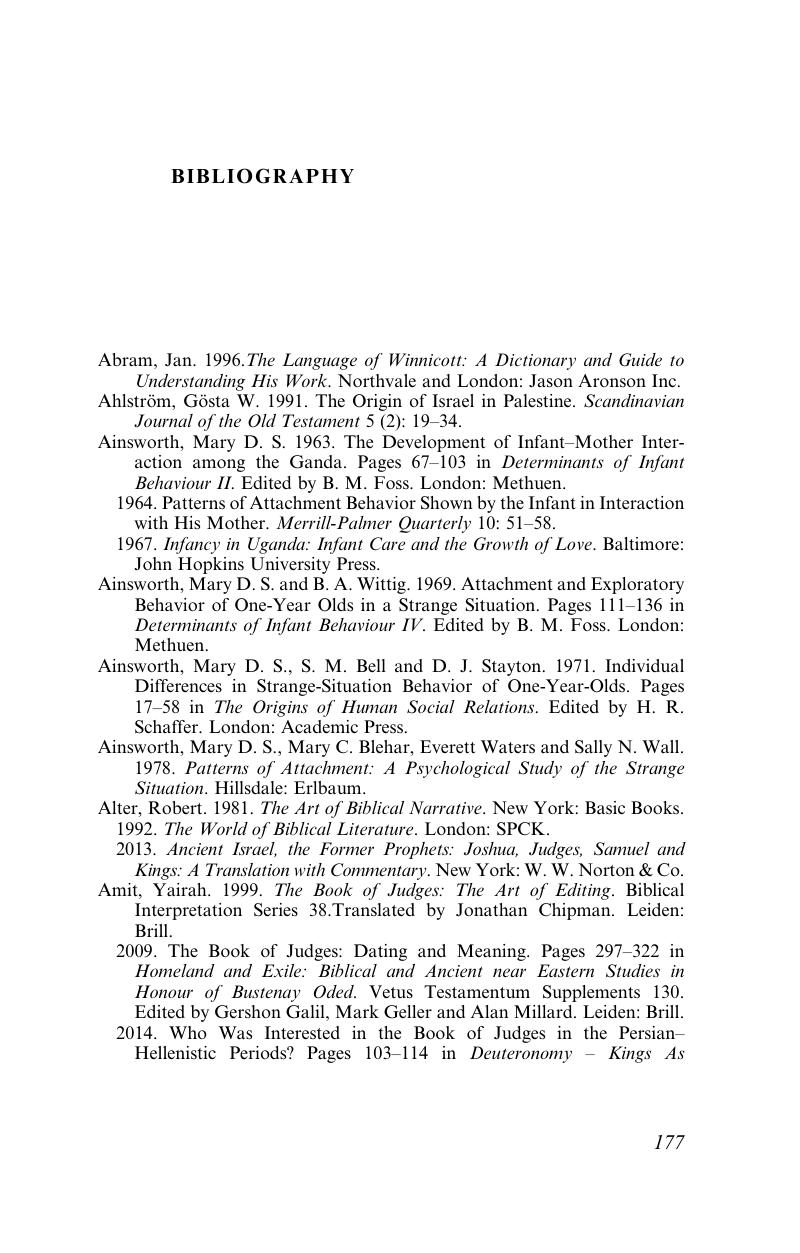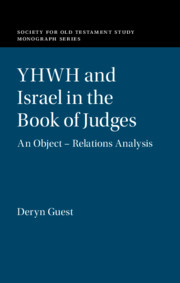Book contents
- YHWH and Israel in the Book of Judges
- Society for Old Testament Study
- YHWH and Israel in the Book of Judges
- Copyright page
- Dedication
- Contents
- Acknowledgements
- Introduction
- 1 Problematic Parenting
- 2 Judges’ Cyclical Framework and Trauma Theory
- 3 YHWH and Israel in the ‘Strange Situation’: Attachment Theory and God-Talk
- 4 Israel’s Masochistic Defence Mechanism
- 5 Conclusion: Psychological Theory and Biblical Hermeneutics
- Bibliography
- Index
- References
Bibliography
Published online by Cambridge University Press: 12 December 2018
- YHWH and Israel in the Book of Judges
- Society for Old Testament Study
- YHWH and Israel in the Book of Judges
- Copyright page
- Dedication
- Contents
- Acknowledgements
- Introduction
- 1 Problematic Parenting
- 2 Judges’ Cyclical Framework and Trauma Theory
- 3 YHWH and Israel in the ‘Strange Situation’: Attachment Theory and God-Talk
- 4 Israel’s Masochistic Defence Mechanism
- 5 Conclusion: Psychological Theory and Biblical Hermeneutics
- Bibliography
- Index
- References
Summary

- Type
- Chapter
- Information
- YHWH and Israel in the Book of JudgesAn Object – Relations Analysis, pp. 177 - 192Publisher: Cambridge University PressPrint publication year: 2018



